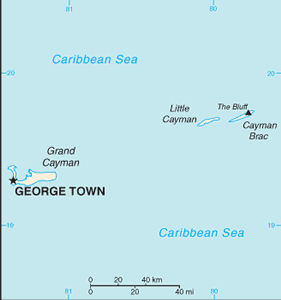The Geography of Cayman Islands
The Geography of Cayman Islands
Caymanian Geography
Location: Caribbean, three-island group (Grand Cayman, Cayman Brac, Little Cayman) in Caribbean Sea, 240 km south of Cuba and 268 km northwest of Jamaica
Geographic coordinates: 19 30 N, 80 30 W
Map references: Central America and the Caribbean
Area: total: 262 sq km land: 262 sq km water: 0 sq km
Area - comparative: 1.5 times the size of Washington, DC
Land boundaries: 0 km
Coastline: 160 km
Maritime claims: territorial sea: 12 nm exclusive fishing zone: 200 nm
Climate: tropical marine; warm, rainy summers (May to October) and cool, relatively dry winters (November to April)
Terrain: low-lying limestone base surrounded by coral reefs
Elevation extremes: lowest point: Caribbean Sea 0 m highest point: The Bluff (Cayman Brac) 43 m
Natural resources: fish, climate and beaches that foster tourism
Land use: arable land: 3.85% permanent crops: 0% other: 96.15% (2005)
Irrigated land: NA
Natural hazards: hurricanes (July to November)
Environment - current issues: no natural fresh water resources; drinking water supplies must be met by rainwater catchments
Environment - international agreements:
Geography - note: important location between Cuba and Central America


